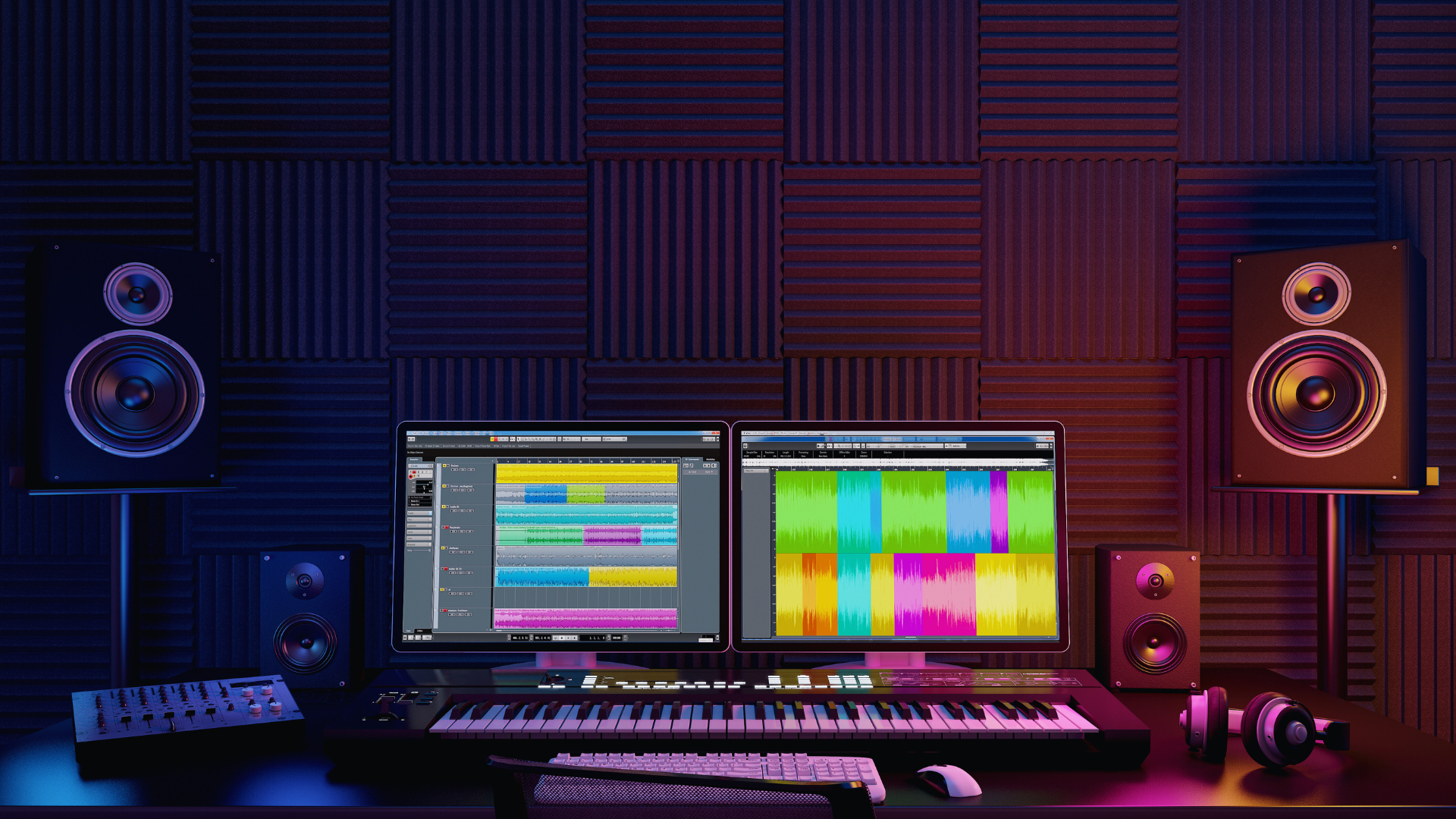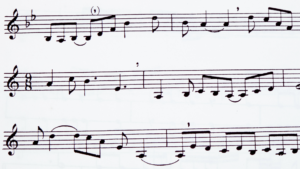
Artificial intelligence is revolutionizing music creation, offering innovative tools that expand the boundaries of artistry. AI in music enables composers and producers to explore new sounds and styles, making the creative process more accessible and dynamic. By utilizing algorithms and machine learning, artists can generate music, analyze trends, and even collaborate with AI systems in real-time.
As technology continues to evolve, the integration of AI in music allows for more personalized listening experiences and the democratization of music production. Musicians can harness AI to streamline their workflows, sparking creativity in ways that were previously unimaginable. This partnership between human creativity and artificial intelligence is shaping the future of music, inviting a new era of exploration and expression.
With the power of AI, emerging artists find themselves equipped with tools that can enhance their productivity and creativity. The implications of these advancements not only transform individual artistic processes but also redefine the music industry itself, challenging traditional notions of authorship and creativity.
The Evolution of AI in Music Production
The integration of AI into music production has transformed how music is created, analyzed, and performed. Key developments include historical advancements in AI tools, the rise of generative AI, and innovations in deep learning techniques.
Historical Development of AI Tools
In the early days, AI’s role in music was limited. Simple algorithms generated sound patterns and basic compositions. The 1980s saw the introduction of rule-based systems, which mimicked human decision-making. Projects like Experiments in Music Intelligence (EMI) showcased the potential of computational creativity.
By the 2000s, more sophisticated AI tools emerged. Software such as Ableton Live and Logic Pro integrated MIDI developments and basic algorithms to assist composers. Researchers developed AI systems that could analyze musical styles and trends, providing insights to artists.
Rise of Generative AI
Generative AI took a quantum leap in music production with notable advancements in algorithmic composition. Tools like Google’s Magenta allow users to create music using machine learning models. These models can learn from existing music data and generate original compositions, blending various genres and styles seamlessly.
Artists began to collaborate with these tools, exploring new creative possibilities. Generative AI can produce loops, melodies, and even accompany singers, enhancing productivity for musicians. Its adaptability allows for real-time adjustments, making it a valuable asset in modern music production.
Deep Learning and Music Composition
Deep learning significantly enhanced music composition capabilities. Neural networks, capable of analyzing vast quantities of auditory data, led to breakthroughs in understanding complex musical structures. These models can recognize patterns and generate music that adheres to specific genres, moods, or styles.
Tools leveraging deep learning, such as OpenAI’s MuseNet, illustrate this evolution. They can compose intricate arrangements that rival human creativity. The capacity to produce high-quality, diversified music with minimal human intervention positions deep learning at the forefront of music production technology.
Creative Dynamics of AI-Generated Music
AI plays a significant role in reshaping the landscape of music creation, influencing both the creative process and industry dynamics. By integrating algorithms into musical composition, AI systems like AIVA exemplify how technology can enhance artistic expression while raising vital questions about creativity and copyright.
AIVA: An AI Composer’s Impact
AIVA (Artificial Intelligence Virtual Artist) is a notable AI composer that demonstrates the potential of algorithms in music creation. It uses deep learning to analyze vast datasets of classical music, enabling it to generate original compositions. AIVA’s works are characterized by emotional depth and structural complexity, showcasing an ability to mimic human creativity.
The impact of AIVA extends beyond individual compositions. Many artists and producers utilize AIVA’s outputs as starting points or inspiration for their projects. This collaboration indicates a shift in the music industry, where AI-generated content is increasingly accepted as a legitimate contribution to artistic expression.
Human-AI Collaborative Creativity
Collaboration between humans and AI is redefining the creative process in music. Musicians leverage AI tools to enhance their songwriting, enabling them to experiment with new styles and structures. This partnership allows for a more diverse range of musical outputs, expanding the boundaries of traditional composition.
Moreover, platforms that facilitate this collaboration help artists refine their ideas. They can generate multiple variations of a piece quickly, enabling faster iteration and innovation. This dynamic interplay fosters an environment where human intuition complements machine efficiency, leading to unprecedented creative possibilities.
Ethical Considerations in AI Music
The rise of AI in music prompts essential ethical questions, particularly regarding copyright. As AI systems generate music, determining ownership becomes complex. Who owns the rights to a piece created by an AI? This uncertainty creates potential conflicts in the music industry as traditional notions of authorship are challenged.
Furthermore, there are concerns about the impact of AI on employment in the music sector. As algorithms become more sophisticated, the role of human composers and musicians may evolve, potentially leading to job displacement. Addressing these ethical dilemmas is crucial for a balanced integration of AI into the creative landscape.
AI’s Role in Music Distribution and Consumption
AI significantly alters how music is distributed and consumed, enhancing personalization and streamlining processes. Key players like Spotify and YouTube leverage AI technologies to reshape listener experiences and provide tailored content.
Streaming Services’ AI
Streaming platforms such as Spotify utilize AI to optimize user engagement. Through algorithms, these services analyze vast amounts of data to identify listening habits, genres, and trending tracks. This data-driven approach allows Spotify to deliver personalized playlists, ensuring that users receive recommendations tailored to their tastes.
The platform’s AI also monitors user interactions, adjusting suggestions in real-time. This dynamic curation leads to increased user satisfaction and time spent listening, benefiting both the platform and artists. It has transformed how independent artists reach audiences, making music distribution more accessible.
AI-Curated Playlists and Recommendations
The rise of AI-curated playlists enhances music discovery. Algorithms can analyze the characteristics of songs, such as tempo and mood, to create playlists that match specific themes or activities. For instance, users might enjoy AI-generated playlists for background music during work or study sessions.
Spotify’s Discover Weekly and Release Radar playlists exemplify this innovation, using machine learning to introduce listeners to new music they may enjoy. As a result, artists gain exposure to potential fans, while listeners enjoy tailored experiences that deepen their musical journey.
YouTube and Algorithmic Promotion
YouTube employs advanced algorithms to promote music content effectively. The platform’s AI analyzes viewer behavior, including watch time and engagement, to recommend videos. This technology aims to keep users on the platform longer.
Music videos and content related to popular artists can quickly rise in visibility due to algorithmic promotion. Notably, the Beatles, once a staple of radio, now benefit from YouTube’s global reach, attracting new fans. The AI not only drives consumption but also shapes trends and supports emerging artists in gaining traction within the vast content landscape.
Practical Applications and Tools for Musicians
Artificial intelligence is transforming the way musicians create, produce, and manipulate music. By incorporating AI technologies, musicians can enhance their creative processes and improve efficiency. Several notable applications and tools illustrate this evolution.
Music Production Tools Enhanced by AI
AI-driven music production tools are streamlining workflows for musicians. Software such as Ableton Live and Logic Pro X are increasingly integrating AI capabilities, allowing for smart sampling and arrangement suggestions. AI can analyze users’ styles and offer tailored recommendations.
Tools like LANDR provide automated mastering services, optimizing tracks without extensive manual input. Musicians can easily choose settings that align with their vision. With platforms like Amper Music and AIVA, artists can generate custom compositions quickly, expanding their creative possibilities while saving time.
AI in Sound Design and Mastering
Sound design is also experiencing significant advancements through AI. Applications such as iZotope Ozone employ AI to assist in mastering, analyzing tracks, and suggesting enhancements based on genre and style. This technology simplifies the complex process of achieving a professional sound.
Tools like ChatGPT can aid in generating fresh ideas for sound textures and effects, allowing musicians to explore innovative directions. Additionally, Jukedeck offers automated soundtrack generation, enabling users to create unique soundscapes with minimal input, thus fostering creativity in sound design.
AI for Remixing and Sound Manipulation
Remixing benefits greatly from AI innovations as well. Platforms like Mal provide tools that facilitate advanced sound manipulation, making it easier for artists to reimagine original tracks. These tools can analyze song structure, enabling seamless transitions and effects.
AI algorithms can generate new variations of a track, offering endless possibilities for remixing. By using software that incorporates AI, musicians can enhance their creative process, experimenting with different styles and techniques that might not have been easily achievable before.











